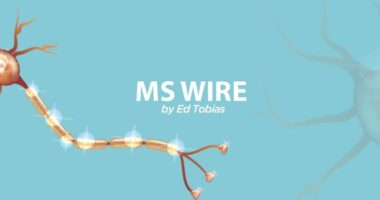Signal Detection Theory May Help Measure MS Cognitive Fatigue

A new tool called signal detection theory (SDT) found a relationship between subjective cognitive fatigue, often experienced by people with multiple sclerosis (MS), and the activation of certain brain regions, a study reported.
Although the relationship was found in both patients and healthy controls after cognitive fatigue was induced by demanding working memory tasks, those with MS had greater effects of fatigue.
“By building on this promising avenue of research, we are establishing the basis for a new set of tools,” study lead Glenn Wylie, PhD, director of the Ortenzio Center at the Kessler Foundation in New Jersey, said in a press release.
This “will help us develop effective interventions for treating this disabling condition in a wide range of individuals and ameliorate its impact on their daily functioning, employment, and quality of life,” Wylie said.
The study, “Signal Detection Theory as a Novel Tool to Understand Cognitive Fatigue in Individuals With Multiple Sclerosis,” was published in Frontiers in Behavioral Neuroscience.
Cognitive fatigue is a persistent and debilitating symptom of MS, and refers to the difficulty starting or sustaining voluntary physical or mental activities, often leading to a feeling of exhaustion after focused concentration.
Measuring cognitive fatigue has been challenging because most studies rely on subjective patient reports, which have failed to correlate with objective performance measures, including time and accuracy of reactions to a stimulus. As a result, new objective measures are needed that reflect the subjective experience of fatigue.
Signal detection theory (SDT) has been proposed as a way to measure cognitive fatigue by assessing a person’s ability to detect a stimulus as well as their psychological state when observing it.
Previous research at the Kessler Foundation showed that signal detection parameters correlated with cognitive fatigue in healthy individuals and related brain activity in the striatum, a region sensitive to changes in cognitive fatigue.
The research team has applied this technique to 30 people with MS, who often experience symptoms of fatigue, along with 20 age- and education-matched controls with no neurological history.
Cognitive fatigue was induced using a series of working memory tasks involving four blocks of two-back tasks, with 65 trials per block. During the two-back task, letters were shown on a screen, one at a time, and participants were asked to respond every time the same letter was presented two trials before.
Collected data included overall accuracy, or the number of trials a correct response was made divided by the total number of trials, and reaction time for the correct trials.
SDT parameters included perceptual certainty, the ability to identify target stimuli correctly, and response bias (criterion). A higher, more liberal response bias occurs when participants respond to anything that might be a target stimulus. In contrast, a conservative response, or less response bias, occurs when they are confident a stimulus is a correct target.
At the same time, all participants underwent structural and functional MRI on the brain, as well as an evaluation using the visual analog scale of fatigue (VAS-F) before (baseline) and after each block of the tasks.
Results showed that people with MS had significantly higher fatigue scores on the VAS-F scale compared with controls, and reported increasingly more fatigue across the four runs of each task. Although both groups reported fatigue during more than half the runs, MS patients reported fatigue on more runs than controls (87% vs. 61%).
Reaction times were also significantly longer for those with MS than for controls (857.8 vs. 771.3 milliseconds).
Regarding SDT parameters, the MS group had a more conservative response bias than the control group, which significantly correlated to VAS-F scores. This means that for increasing fatigue scores, participants’ response bias became more conservative.
According to MRI data on brain structure, the volume of the striatum significantly decreased while participants’ response bias increased, or became more conservative. There was no correlation between striatal volume and VAS-F score or perceptual certainty.
With functional MRI measures, there were significant differences between patients and controls regarding activation in several brain regions and VAS-F scores. The groups also showed differences in response bias, with those in the control group becoming less conservative with the activation of certain brain areas, while activation of those same areas resulted in MS patients being more conservative.
Lastly, the results were similar when the analysis focused only on the 24 patients with relapsing-remitting MS, “indicating the results were not solely driven by the individuals with more progressive disease courses,” the researchers wrote.
“We demonstrated that response bias was related to subjective state fatigue in MS,” said first author Cristina Román, PhD, a National MS Society postdoctoral fellow at the Kessler Foundation. “This reinforces our previous finding of the same relationship in controls and provides additional support for this signal detection theory metric as an objective measure of cognitive fatigue.”
“These results hold promise for characterizing cognitive fatigue in MS and developing effective interventions in the future,” the researchers said.







